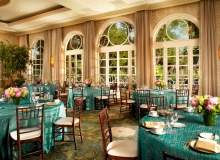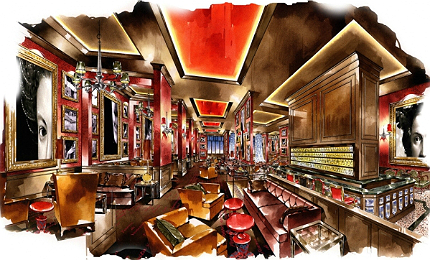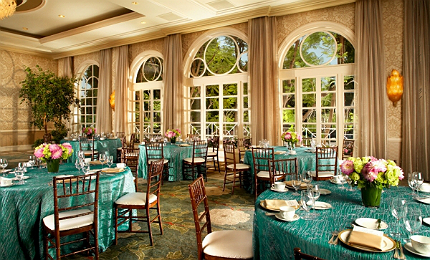
If the oft-cited property touchstone of ‘location, location, location’ holds true, it’s nowhere more in evidence than in the hospitality industry. No hotel stands alone, independent of its location. Successful hotel properties must act as a springboard to the culture and attractions of the surrounding destination.
But to what extent should a hotel be a reflection of local culture, as well as a gateway to it? The explosion of globalisation and international branding in the 80s and 90s brought an emphasis on the familiarity of generic branding over distinctive or authentic interior design. But times have changed since then, and the hospitality market is considerably more complex today.
Hotel interiors: global vs local
Sue Firestone, president of sfa design and a hotel interior design veteran with more than 30 years of industry experience, was there when developing branded hotels that provide the same aesthetic, whatever the location, was the norm. "Twenty years ago, every Ritz-Carlton looked the same; that was sort of the direction," she says.
As time passed and travellers began to tire of the branded monotony, the industry started to drift away from generic interiors and towards spaces that keep their surrounding cultural influences in mind. When she spoke to us back in 2010, Firestone herself was a prime proponent of this trend.
"Everything we do there has to have a reason," she said, describing her work on a new Four Seasons hotel in Oman. "Whether it’s the colour of the mountains or the ocean or original 2,000 year-old forts, we’re not just plonking in an sfa design. The product is really reflective of the indigenous culture."

US Tariffs are shifting - will you react or anticipate?
Don’t let policy changes catch you off guard. Stay proactive with real-time data and expert analysis.
By GlobalDataBut in the balance between local and global in the hospitality sector, things tend to move in cycles, as Firestone observes when we catch up with her in 2013. "[After the generic design of the 90s] it came full circle – the boutique hotels came into the fold and every hotel was different and everything was really funky. Then the W developed the ‘hip’ hotel, and we started to swing back to the same expectations in every place. And now I think what’s happening is people are trying to go a bit less with the hip thing and just go back to basics."
Small-scale hotels: the local experience
Starwood’s W Hotels brand, launched in 1998, represents a largely successful attempt by a major hospitality company to incorporate a sense of boutique style into the branded landscape. However, while W Hotels has found success with its hyper-chic décor, from an aesthetic perspective the chain has unwittingly shone a spotlight on the difference between branded boutique style, where seemingly personal touches are replicated across all hotels, and the truly one-of-a-kind experiences offered by independent hotels.
Despite the mainstream’s flirtation with boutique aesthetics, major hotel brands are largely ill-equipped to replicate the local experience. As a result, independent hotels have been able to strengthen their separate position in the niche market, often by designing authentic and distinctive accommodation that invites local influences into lobbies and guest rooms.
Take the Masseria Montenapoleone, a renovated 16th century farm in Pezze di Greco, southern Italy. This still-active fortified farm offers rustic, authentic accommodation that attracts tourists because of its connection to the surrounding landscape. "The masseria was refurbished and renovated not to stand out, but rather to be part of the nature around it," reads the hotel’s website. "Some of the rooms are even original caves and dwellings of the first settlers in the area hundreds of years ago."
Independent hotel owners have emphasised local character, because they know it is one of the few aspects of the hospitality market in which small operations can match, and indeed outmatch, the big brands. Whether it’s the Zeelandmolen in the Netherlands, built into an 18th century windmill, or the Design Hotel Secret de Paris, with rooms themed around iconic Parisian landmarks and developed by ‘atmospherist’ Sandrine Alouf, boutique hotels still corner the market for location-specific design and boldness of vision.
Introducing local character to global chains
In the mainstream hotel market, the global perspective is a permanent fixture, even if brands are now savvier in providing different experiences for different tourist demographics. As a result, the design of branded luxury hotels has to maintain a much finer balance between authentic design and the baseline expectations that have become virtually universal in the luxury market. Even Rosewood Hotels & Resorts’ much-trumpeted ‘A Sense of Place’ philosophy falls down the priority list when it comes to these expectations.
Firestone, who primarily works on interiors for major hotel brands, is well aware of this balance. "The world is so global now; it has changed quite a bit," she says. "So when people expect a luxury product, there are certain things that come with that – the size of the room, marble bathrooms and so on. Those are international expectations, for sure."
This balance is the key to the revival of what Firestone calls the ‘back to basics’ approach, where local influences provide authentic undertones to a predominantly contemporary design. sfa’s renovation work on the Four Seasons Hotel Los Angeles at Beverly Hills is an example of this mix, combining influences from the golden age of Hollywood glamour with an elegant garden theme.
"Even though it’s a Four Seasons, the owners are former gardeners and florists, and the hotel itself is located in a very residential garden district," Firestone says. "So we chose a very formal garden theme mixed with Hollywood glamour, because their market is definitely the press junkets of Hollywood and so on. So it definitely has a very specific vibe, not just in the location and the market but also to reflect the owners and who they are."
This emphasis on a mix of influences might somewhat stifle the possibility for a truly bold, unique interior, but the mainstream luxury market demands a more subtle approach to suit the widest possible range of guests. And despite the limitation, this contemporary cocktail of influences can help designers avoid the temptation to push a single vision into the realms of cliché.
Such was the case with Firestone’s redesign of the Chumash Casino Resort in the Santa Ynez Valley in California, which uses subtle symbols to mirror the culture of its native American Chumash owners, while stirring in other local influences so that no single theme dominates.
Four Seasons Hotel Los Angeles
"Again in that case it was not just the culture of the owners, which is obviously a highly sophisticated local Indian tribe that is very proud of its heritage," says Firestone. "So there are undertones of that, but I wouldn’t say it was the main driving force – they were also very respectful of the environment that they are in. The Santa Ynez Valley is beautiful, and they asked us to hit the tones that are out there. It’s becoming the new wine country, so there are undertones of the Santa Ynez Valley, wine country and also a nod to the Chumash heritage and their culture."
While boutique hotels have the option, and indeed the incentive, to place local character front-and-centre in their quest to find a place in their niche market, the concept of authentic, location-based design makes for an awkward transfer to the scaled-up environs of international brand hotels. But, despite the huge design gulf that exists between these two markets, the niche and the mainstream hotel worlds are naturally suited to co-existing harmoniously, taking aim at different types of traveller and designing their properties accordingly. After all, the mainstream wouldn’t be called the mainstream if there wasn’t an alternative.
Related content
In pursuit of Platinum: green building with LEED
With 14,000 certified projects, the US Green Building Council’s LEED rating system has become a global brand for the eco-friendly design-build market.
Weird and wonderful: world’s most unusual interior design concepts
Thankfully, all over the world designers and artists are freeing themselves from conventional ways of designing and indulging in creative concepts.





